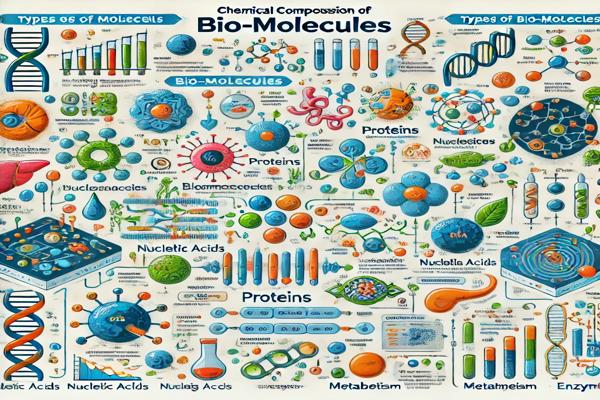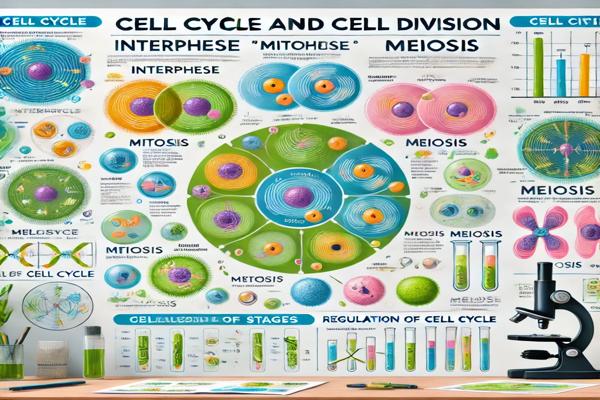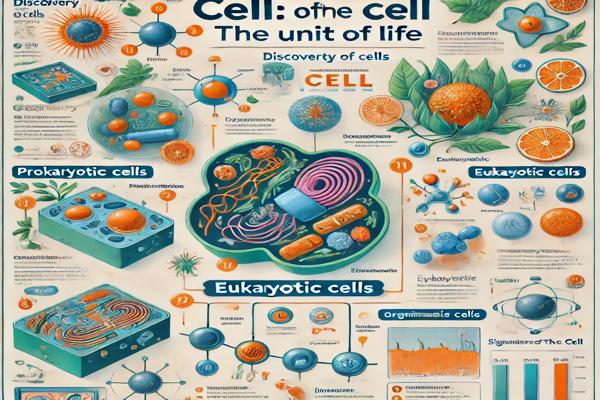Bio-Molecules: The Essence of Life

Bio-Molecules: The Essence of Life
Living organisms are made up of diverse molecules, broadly categorized into organic and inorganic components. These molecules form the foundation of life, enabling complex biochemical processes.
Chemical Composition of Living Cells
How to Analyze Chemical Composition:
- Organic Compounds:
- Grind living tissue with trichloroacetic acid to form a slurry.
- Filter the slurry into two fractions:
- Filtrate (acid-soluble)
- Retentate (acid-insoluble)
- Inorganic Compounds:
- Burn tissue samples to produce ash.
- Analyze the ash to identify various inorganic compounds.
Types of Bio-Molecules
Bio-molecules are broadly classified into micro-molecules (monomers) and macro-molecules (polymers).
Primary and Secondary Metabolites
- Primary Metabolites: Essential for normal physiological processes.
Examples: Amino acids, nitrogenous bases, proteins, and nucleic acids. - Secondary Metabolites: Derived from primary metabolites and often have ecological functions.
Examples:- Pigments: Anthocyanins, carotenoids.
- Drugs: Vinblastin, curcumin.
- Alkaloids: Morphine, codeine.
- Essential Oils: Lemongrass oil.
- Polymeric Compounds: Rubber, cellulose, resins.
Biomacromolecules
Biomacromolecules are large molecules (>1000 Dalton) found in the acid-insoluble fraction.
Examples: Polysaccharides, nucleic acids, proteins, and lipids.
Polysaccharides
- Polymers of monosaccharides connected by glycosidic bonds.
- Examples:
- Cellulose and starch (homopolymers of glucose).
- Inulin (polymer of fructose).
- Glycogen (animal glucose storage).
Special Features:
- Starch forms helical structures, holding iodine to produce a blue color.
- Cellulose lacks helices, making it iodine-insensitive.
Nucleic Acids
Nucleic acids (DNA and RNA) are polymers of nucleotides.
Components:
- Nucleotides: Nitrogenous base + Pentose sugar + Phosphate group.
- Nucleosides: Nitrogenous base + Pentose sugar.
Types:
- DNA: Double-stranded; contains Adenine (A), Guanine (G), Cytosine (C), and Thymine (T).
- RNA: Single-stranded; contains Uracil (U) instead of Thymine.
Bonding: Phosphodiester bonds connect nucleotides in a chain. A DNA helix consists of 10 base pairs per turn, measuring 3.4 nm in length.
Proteins
Proteins are polymers of amino acids connected by peptide bonds.
Structural Organization:
- Primary Structure: Linear sequence of amino acids (non-functional).
- Secondary Structure: Alpha-helices or beta-pleated sheets stabilized by hydrogen bonds.
- Tertiary Structure: Coiled 3D structure, functional with peptide, hydrogen, disulfide, and ionic bonds.
- Quaternary Structure: Association of two or more tertiary structures (e.g., hemoglobin with two alpha and two beta chains).
Metabolism: Chemical Reactions in Living Systems
Metabolism refers to all chemical reactions in living organisms, consisting of two main types:
- Anabolic Pathways: Construct larger molecules from smaller units (e.g., photosynthesis).
- Catabolic Pathways: Break down larger molecules into smaller units (e.g., respiration).
Key Characteristics:
- Metabolic reactions are enzyme-catalyzed.
- ATP acts as the energy currency in these processes.
Enzymes: Nature’s Catalysts
Enzymes are biological catalysts made of proteins. They lower the activation energy required for chemical reactions.
Properties of Enzymes:
- Specific to substrates due to unique active sites.
- Reusable as they remain unchanged during reactions.
- Sensitive to temperature and pH.
Example: The enzyme carbonic anhydrase accelerates the hydration of CO₂ by 600,000 molecules/second.
Factors Affecting Enzyme Activity
- Temperature: Enzymes work best at their optimum temperature (usually 40°C).
- pH: Specific enzymes function at different pH levels (e.g., pepsin at pH 2, amylase at pH 7).
- Substrate Concentration: Increased substrate levels boost reaction rates until saturation.
Enzyme Inhibition:
- Competitive Inhibition: Inhibitors compete with substrates for the enzyme’s active site.
Example: Malonate inhibits Succinic dehydrogenase.
Co-Factors in Enzyme Activity
Co-factors enhance enzyme activity and are categorized as:
- Prosthetic Groups: Tightly bound to enzymes (e.g., heme in catalases).
- Co-enzymes: Loosely bound and transient (e.g., NAD, NADP).
- Metal Ions: Form coordination bonds (e.g., Fe²⁺, Zn²⁺).
Conclusion
Bio-molecules form the backbone of all living organisms, facilitating diverse structural and functional roles. From proteins to nucleic acids, these molecules are essential for growth, reproduction, and maintaining life. Understanding bio-molecules provides valuable insights into the complexity of life.
Keywords: Bio-Molecules, Proteins, Enzymes, Metabolism, Nucleic Acids, Polysaccharides, Cell Composition, Biomolecules in Life.
| Category | Subcategory | Examples | Key Features/Functions |
|---|---|---|---|
| Micro-Molecules | Primary Metabolites | Amino acids, Nitrogenous bases, Proteins | Essential for physiological processes, building blocks of life. |
| Micro-Molecules | Secondary Metabolites | Anthocyanins, Morphine, Lemongrass Oil | Derived from primary metabolites; have ecological and pharmaceutical significance. |
| Macro-Molecules | Polysaccharides | Cellulose, Starch, Glycogen | Long chains of monosaccharides, storage (starch, glycogen), structural roles (cellulose). |
| Macro-Molecules | Proteins | Hemoglobin, Enzymes | Polymers of amino acids; structural, functional, and regulatory roles. |
| Macro-Molecules | Nucleic Acids | DNA, RNA | Store and transfer genetic information; RNA aids protein synthesis. |
| Macro-Molecules | Lipids | Phospholipids, Triglycerides | Form cell membranes, store energy, and act as signaling molecules. |
| Metabolism | Anabolic | Photosynthesis | Constructs larger molecules from smaller units, requires ATP. |
| Metabolism | Catabolic | Respiration | Breaks down larger molecules into smaller units, releases energy in the form of ATP. |
Read also –
- NCERT Official Textbook
- Bio-Molecules – BYJU’S
- Bio-Molecules – Toppr
- NCERT Solutions – Learn CBSE
- Bio-Molecules – Vedantu
- ExamFear Notes on Bio-Molecules
- https://alisciences.com/structural-organization-in-animals/
- https://alisciences.com/sea-lamprey-petromyzon-marinus-brief-introduction/
Hi, I’m Hamid Ali, an MSc in Biotechnology and a passionate Lecturer of Biology with over 11 years of teaching experience. I have dedicated my career to making complex biological concepts accessible and engaging for students and readers alike.
Beyond the classroom, I’m an avid blogger, sharing insights, educational resources, and my love for science to inspire lifelong learning. When I’m not teaching or writing, I enjoy exploring new advancements in biotechnology and contributing to meaningful discussions in the scientific community.
Thank you for visiting my blog! Feel free to connect and explore more of my work.





